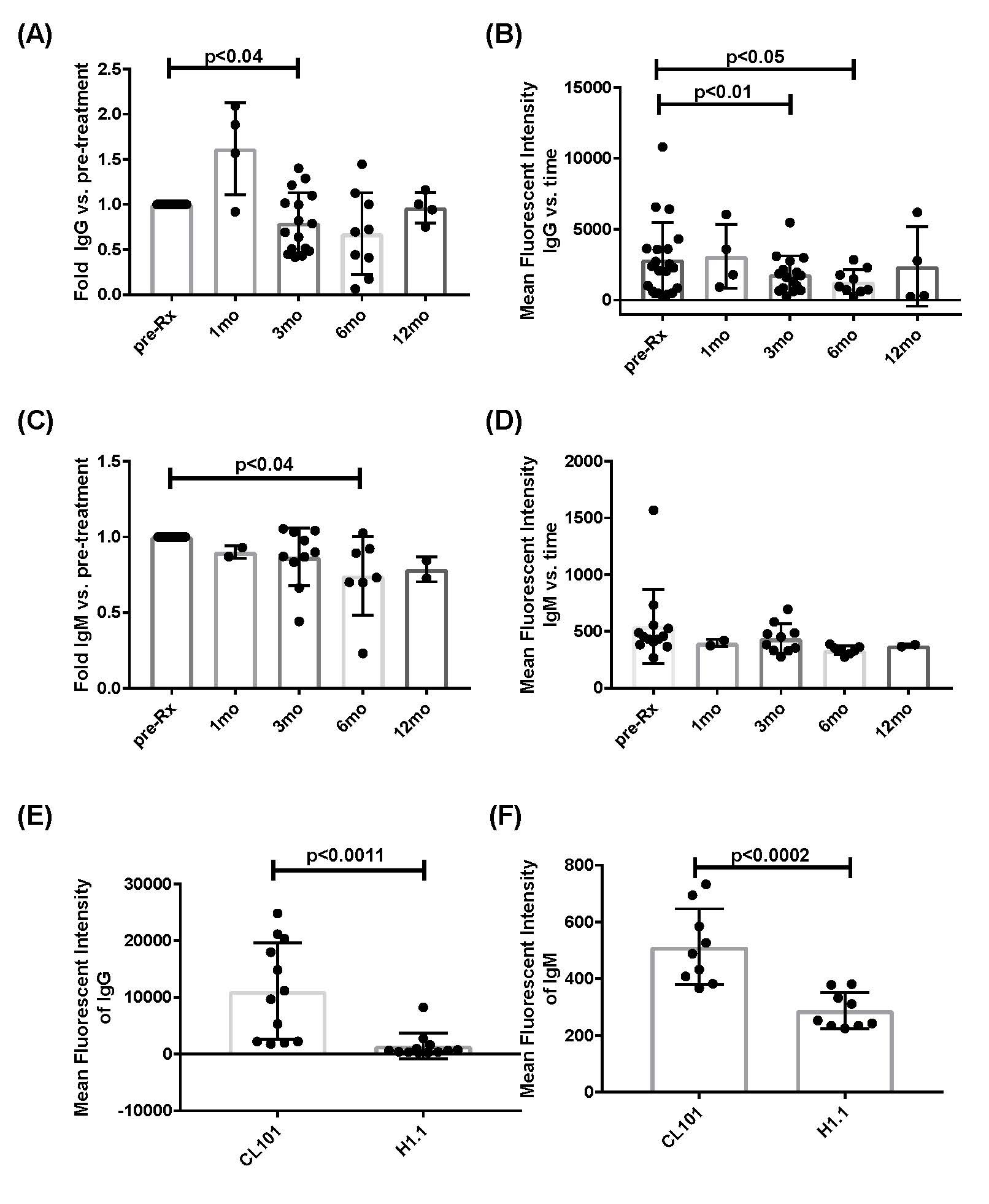The Effect of B Cell Depletion Therapies on Preformed Xenoantibodies in Transplant Recipient
1Pathology and Laboratory Medicine, University of Wisconsin-Madison, Madison, WI, 2Medicine/Nephrology, University of Wisconsin-Madison, Madison, WI, 3Surgery, University of Wisconsin-Madison, Madison, WI
Meeting: 2020 American Transplant Congress
Abstract number: A-270
Keywords: B cells, Kidney transplantation, Rejection, Xenoreactive antibodies
Session Information
Session Name: Poster Session A: Xenotransplantation
Session Type: Poster Session
Date: Saturday, May 30, 2020
Session Time: 3:15pm-4:00pm
 Presentation Time: 3:30pm-4:00pm
Presentation Time: 3:30pm-4:00pm
Location: Virtual
*Purpose: To assess the effect of B cell depletion therapies on preformed xenoantibodies in transplant recipient. Preformed xenoantibodies are a significant barrier to successful xenotransplantation. Antibody mediated rejection (ABMR) is commonly treated with Rituximab, IVIG and steroids. The effects of these alloantibody directed therapies on preformed xenoantibodies is unknown.
*Methods: We obtained plasma from post kidney transplant patients with biopsy proven antibody mediated rejection (ABMR) (n=20) prior to treatment and 1-12 months post-treatment. Patient plasma was diluted at 1:16 or 1:64 and incubated with wildtype porcine fibroblast (CL 101) or pig fibroblast knocked out for CMAH, GGTA1, and 2 B4GalNT2 orthologs genes (H1.1). The levels of antibody binding were assessed by flow cytometry. Mean fluorescence intensity (MFI) for IgG and IgM at various time points were normalized to pre-treatment MFI.
*Results: In this cohort, IgG binding to CL101 demonstrated an initial increase at 1 month (n=4) after IVIG, which drops below baseline at 3month (n=16, p<0.04 vs.basline) where the majority of patient samples were obtained (Fig A). The reduction in IgG persisted at 6month post-treatment. The effect appears to be attenuated at 12 month post-treatment but very few samples were available at that time point (Fig A). Un-normalized MFI of IgG binding to CL101 shows not only the trend to decrease, but also a significant reduction in the magnitude of some high level MFI’s, suggesting that treatment is effective at reducing xenoantibodies at high levels (Fig B). Similarly, IgM binding to CL101 continues to decline after initial B cell treatments to 0.90-fold at 1month (no sig.), 0.86-fold at 3month(no sig.), and 0.74-fold at 6month (n=7, p<0.04) (Fig C). Unlike IgG, IgM binding remained low at 12month post-treatment. We also assessed the level of IgG and IgM binding to H1.1. Here we demonstrate that even before treatment, patients’ serum showed significantly lower IgG and IgM binding to H1.1 compared to that of wildtype CL101 (n=12 for IgG and n=9 for IgM), p<0.005 H1.1 vs. CL101) (Fig E & F).
*Conclusions: Rituximab, IVIG, and steroids may reduce preformed xenoantibodies in select patients. Our porcine cell line knocked-out of CMAH, GGTA1, and B4GalNT2 orthologs genes have significantly less xenoantibody binding.
To cite this abstract in AMA style:
Yeh S, Wilson NA, Djamali A, Redfield R. The Effect of B Cell Depletion Therapies on Preformed Xenoantibodies in Transplant Recipient [abstract]. Am J Transplant. 2020; 20 (suppl 3). https://atcmeetingabstracts.com/abstract/the-effect-of-b-cell-depletion-therapies-on-preformed-xenoantibodies-in-transplant-recipient/. Accessed December 15, 2025.« Back to 2020 American Transplant Congress

